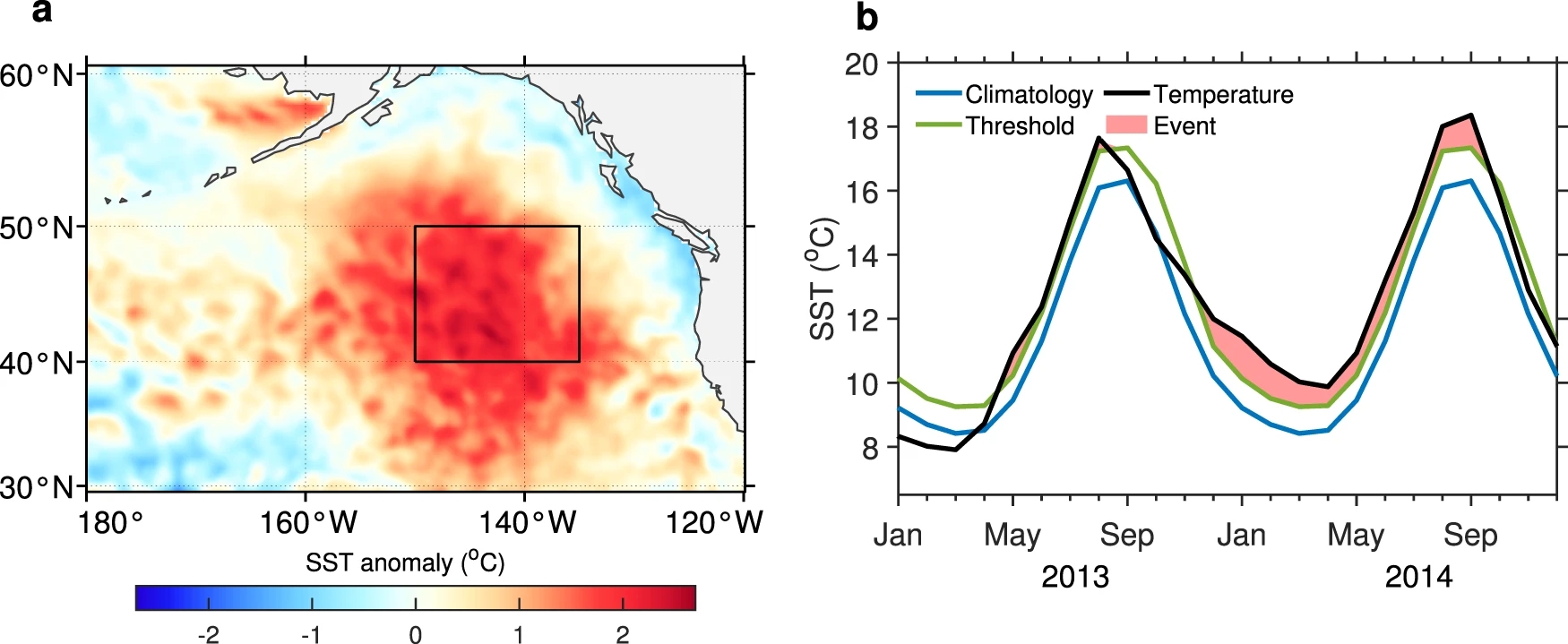Combined oceanic and atmospheric forcing of the 2013/14 marine heatwave in the northeast Pacific
Huan-Huan Chen, Yuntao Wang, Peng Xiu, Yi Yu, Wentao Ma & Fei Chai
Published in npj Climate and Atmospheric Science, January 2023
An unprecedented warm sea surface temperature (SST) anomaly event, namely, the Blob, occurred in the northeast Pacific during the winter (October–January) of 2013/2014, causing substantial economic and ecological impacts. Here, we explore the driving forces of the Blob from both atmospheric and oceanic perspectives and show that the Blob primarily resulted from weak wintertime cooling due to the reduced air-sea heat flux transfer from the ocean to the atmosphere and the reduced horizontal advection of cold water in the upper ocean. Both mechanisms were attributed to an anomalous high-pressure system over the study region. Specifically, the anomalous air-sea heat flux, which was dominated by turbulent heat flux anomalies, was mainly induced by the increased air temperature (i.e., with a contribution of approximately 70%) and the weakened wind speed associated with the high-pressure system. The reduced horizontal heat advection was mainly due to the weakened winds acting on the ocean temperature meridional gradient. Using a regional ocean numerical model with different experimental runs, we evaluated the contributions of air temperature and wind drivers to the Blob at both the surface and subsurface of the ocean. The Blob was absent when the model was forced by climatology-air-temperature. Both the SST and integrated ocean heat content (OHC, 0–150 m) decreased, and the mixed layer depth (MLD) was deeper than that in the control run forced by real atmospheric conditions. In the climatology-winds experiment, obvious warm anomalies still existed, which were similar to but weaker than the control run. The SST (OHC) and MLD values in the climatology-winds run were between those of the climatology-air-temperature run and the control run. Compared to former studies that attribute the formation of the Blob to an anomalous air-sea heat flux and horizontal advection mainly induced by reduced winds, our study demonstrates that anomalous warm air temperatures played a more important role in its formation.

Fig. a SST anomalies in February 2014 from the ERA5 reanalysis; the black box (40°N–50°N, 135°W–150°W) denotes the study region. b Monthly averaged SST time series from ERA5 (black line), climatological monthly averaged SST (blue line) and the threshold (green line). The pink shading indicates MHWs where the SST exceeds the threshold.
Chen, HH., Wang, Y., Xiu, P. et al. Combined oceanic and atmospheric forcing of the 2013/14 marine heatwave in the northeast Pacific. npj Clim Atmos Sci 6, 3 (2023). https://doi.org/10.1038/s41612-023-00327-0